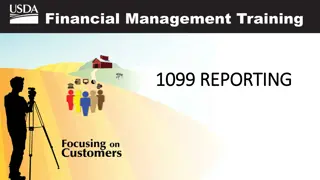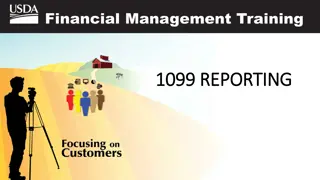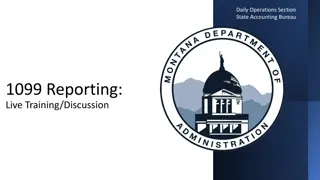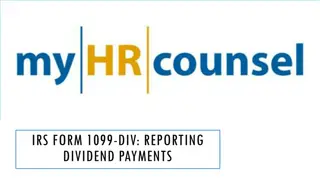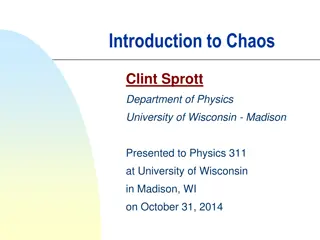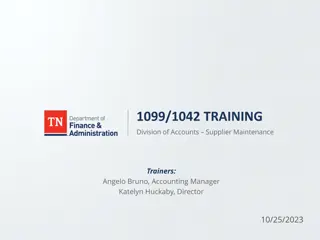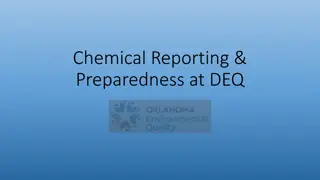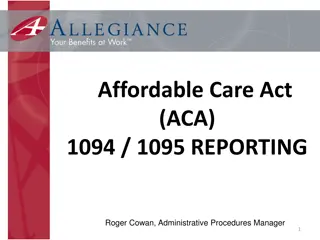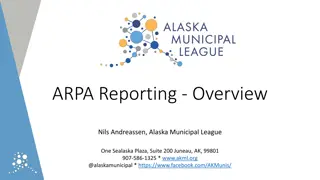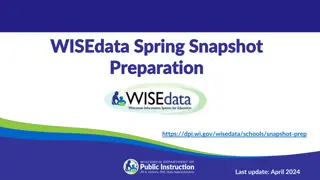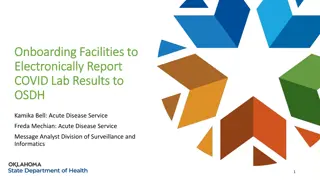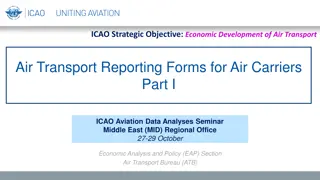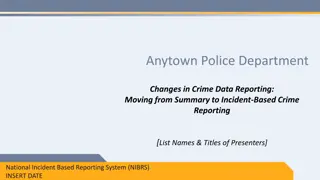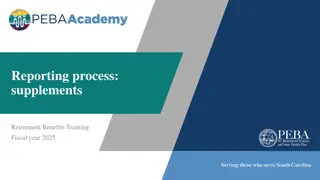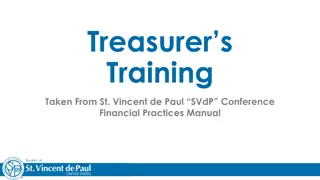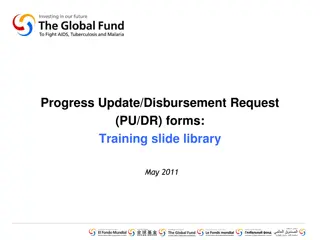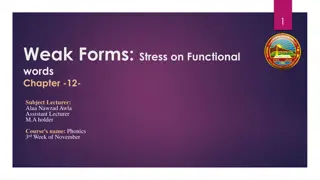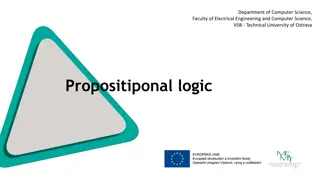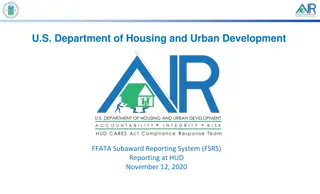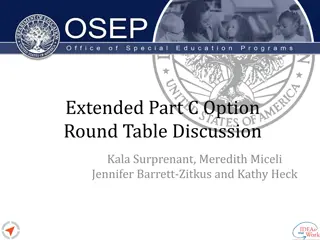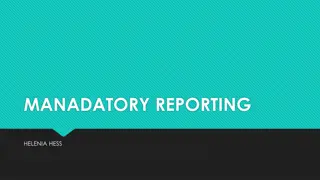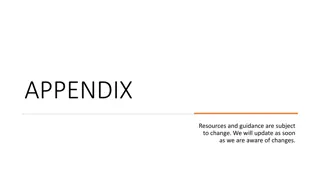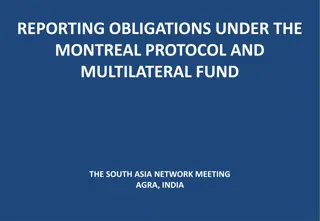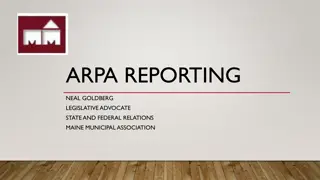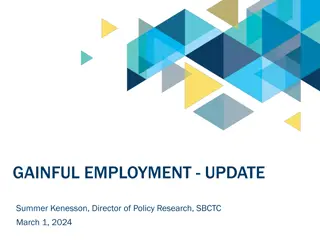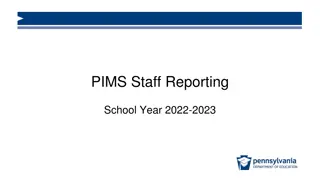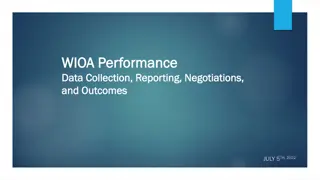Chaos in Reporting: Understanding 1256 and 1099 Forms
Explore the complexities of IRS reporting with 1256 and 1099 forms, uncovering challenges in matching data, dealing with inaccuracies, and navigating differing valuation methods. Learn how chaos ensues when discrepancies arise, inviting audits and potential confusion for taxpayers and accountants alike.
Download Presentation

Please find below an Image/Link to download the presentation.
The content on the website is provided AS IS for your information and personal use only. It may not be sold, licensed, or shared on other websites without obtaining consent from the author. Download presentation by click this link. If you encounter any issues during the download, it is possible that the publisher has removed the file from their server.
E N D
Presentation Transcript
IRC 1256 + 1099 = CHAOS NYSSCPA s May16, 2019 Mark Fichtenbaum 1
1256 and 1099 chaos 1099 s Congress keeps expanding the use of 1099s to get information to the IRS Gross Proceeds Reporting Cost Basis Wash Sales Short term v. long term CBO consistently scores additional reporting as revenue gainers Interesting because substantive law hasn t changed 2
1256 and 1099 chaos 1099s Assumption is that they are correct Most taxpayers don t look at them; Many give the 1099s to their accountants Accountants don t question them IRS has set up a sophisticated computer system to match 1099s to tax returns When there is a mismatch, IRS automatically sends out a computer generated deficiency notice If someone changes the information on the 1099 by first reporting the number and then adjusting it, the taxpayer is inviting an audit 3
1256 and 1099 chaos 1256 Exchange traded index options are 1256 contracts Unrealized gains and losses must be recognized at the end of the year Unrealized gains and losses are reported on a 1099 The options must be traded on a national exchange for them to qualify as a 1256 contract It shouldn t be difficult to compare the entry price of an option and its fair market value on 12/31 4
1256 and 1099 chaos Chaos begins Example: TD Ameritrade Year end statement values the options based on the midpoint of their bid/ask on the last trading day of the year follows Reg. Sec. 20.2031- 2(c) Gainskeeper hired by TD to prepare the 1099s uses a different method follows Reg. Sec. 20.2031- 2(b) Gainskeeper uses the last traded price CHAOS 5
1256 and 1099 chaos Chaos begins Reg. Sec 2031-2 2(b)(1) and 2(b)(2) apply to stocks and bonds Use the mean of the high and low on the valuation date If there weren t any trades on the valuation date, keep going back in time until there was a trade This works reasonably well for stocks and bonds However, for options, even a relatively small move in the stock creates a large move in the option due to its inherent language 2(c) When going back becomes unreasonable, use the average of the bid/ask spreads on the evaluation date For customer statement purposes, TD Ameritrade used the 2(c) methodology For 1099 purposes, TD/Gainskeeper used the 2(A),2(b) approach regardless of how far back they had to go, and without regard to reasonableness of their results Lets see the CHAOS 6
1256 and 1099 chaos Chaos begins Example: TD Ameritrade Real life example: 12/31 statement approximately $50,000 of unrealized losses 1099 over $3 million in unrealized gains! Spoke to local TD office (Hawaii) no clue Spoke with local accountants no clue and will not challenge the 1099 Spoke with local IRS office no clue 7
1256 and 1099 chaos Chaos begins What is wrong with this picture: Bid/Ask Last Price NDX NDX NDX NDX NDX NDX SPX SPX SPX SPX SPX SPX SPX 18-Oct-19 18-Oct-19 20-Dec-19 20-Dec-19 18-Oct-19 18-Oct-19 20-Dec-19 20-Dec-19 20-Dec-19 30-Sep-19 30-Sep-19 28-Feb-19 30-Sep-19 Call Call Put Put Call Put Call Put Put Call Call Put Put 5000 5600 8100 8400 5300 8300 1225 3200 3400 1600 1400 3300 3300 1517.5/1535.3 1055.6/1071.2 1687.6/1705.9 1953.2/1970.2 1279.2/1296.4 1868.3/1883.5 1260/1260.1 675.2/675.3 863.7/863.8 905/905.1 1094.9/1095.1 791.4/791.65 773.2/773.4 1360.1 1665.7 2001.6 2224.6 1325.48 1207.78 1537.75 806.05 998.1 807.95 1093.53 887.23 867.61 12/26/2018 12/3/2018 12/24/2018 12/21/2018 12/19/2018 12/3/2018 12/4/2018 12/26/2018 12/26/2018 12/24/2018 12/28/2018 12/27/2018 12/26/2018 8
1256 and 1099 chaos Chaos begins Bid/Ask Last Price 905/905.1 1094.9/1095 1093.53 SPX 30-Sep-19 Call1600 SPX 30-Sep-19 Call 1400 Calls are cash settled and European style 200 point spread in calls on same underlying index and maturity date can t exceed 200 TD valued the spread at 190 Gainskeeper at 285 TD still refused to amend the 1099 807.95 9
1256 and 1099 chaos Chaos begins 3 of the options last traded on December 3 and December 4 Is that really the fair market value as of December 31? Market was volatile in December last year Every 1099 issued by a Gainskeeper client that included an option that did not trade on December 31 is probably incorrect 10
1256 and 1099 chaos Abuse would be simple Enter into a box spread that is deep in the money NDX 3100-3200; NDX is currently about 7300 Nobody is trading those options Box spread is really a synthetic loan/borrow transaction done via options Strike prices and index is irrelevant The day you enter the trade will more than likely be the last day those options trade 11
1256 and 1099 chaos Abuse would be simple Initial trade would be for thousands of contracts At year end trade out of the two losing positions Only 1 contract has to be traded to get a new last price Literally hundreds of millions of dollars of phantom losses on 1099s would appear IRS computer will match Other side of trade will ignore 1099; or find a corporation to be the other side no 1099 issued 12
1256 and 1099 chaos Chaos never ends Short sales Normal rule for stocks, putting aside 1259 Gains and losses are recognized when the short sale is closed Short sale is closed by making delivery Buy stock on 12/31 to close short sale of stock Trade settles on 1/3 at the earliest Can t deliver until trade settles Next year event for both tax and 1099 reporting 13
1256 and 1099 chaos Chaos never ends Short sales 1256 options The only thing that is the same is the word short A short option position is a contractual liability No property was borrowed The day that you close the short position by buying the identical position ends your short position; o If these were American style options your short options could not be assigned once you entered into the closing position o Assignments are always done after the close of trading for this reason The 12/31 trade should be treated as closing the short position in the current year 14
1256 and 1099 chaos Chaos never ends Short sales 1256 options If I am correct - then the gain or loss should be reported as a realized gain or loss in the current year Assume I am wrong the gain or loss on the option should be reported as an unrealized gain or loss but still recognized in the current year Gainskeeper solution Nothing is reported in the current year Solution Tell your individual clients to never close a short option position with an unrealized loss on 12/31 15
1256 and 1099 chaos Abuse would be simple Enter into an at the money box spread At the end of the year either the short call or short put will have an unrealized gain. Close the position on 12/31 and re- hedge The gain is moved into next year and all you are left with are unrealized losses which will be recognized per the 1099 16


